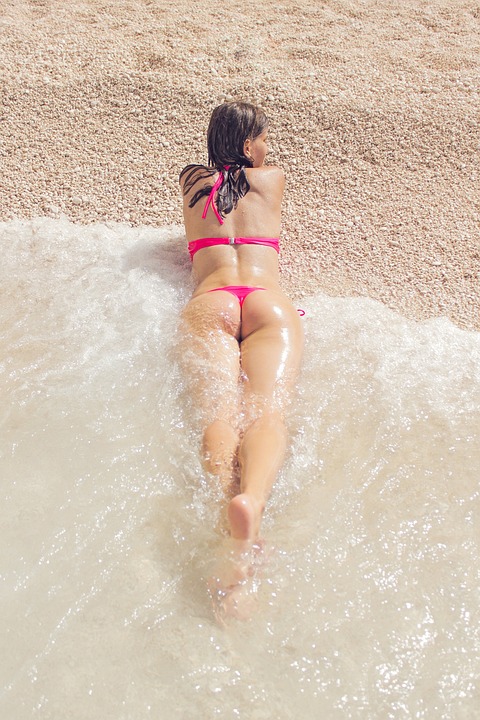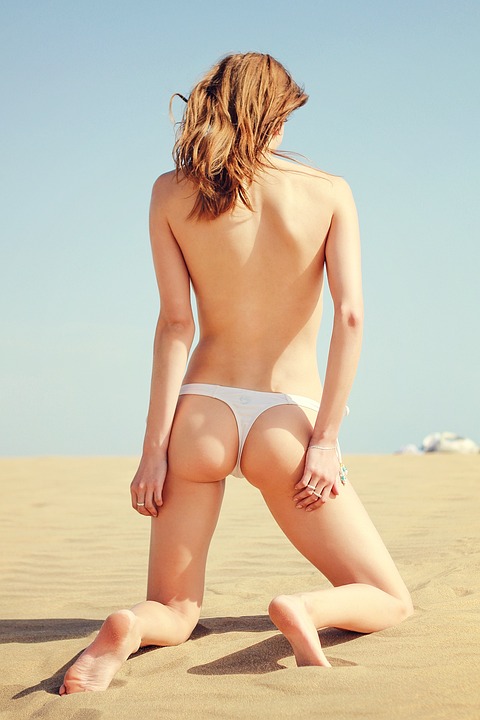Bikini Line Blister: Causes, Symptoms, Treatment, and Prevention
Are you experiencing discomfort and pain in your Bikini Line area? Have you noticed the appearance of blisters that are causing you distress? If so, you may be dealing with a Bikini Line blister. In this article, we will explore the causes, symptoms, treatment, and prevention methods for Bikini Line blisters, helping you understand this condition better and providing you with the necessary knowledge to alleviate your discomfort.
Causes
Bikini Line blisters can occur due to various reasons. The most common causes include:
1. Friction: Friction caused by tight clothing, such as swimsuits or underwear, rubbing against the sensitive skin of the Bikini Line can lead to blisters. This is especially true if the fabric is rough or if it constantly rubs against the area.
2. Shaving: Improper shaving techniques or using dull razors can cause irritation and lead to blisters. Shaving against the hair growth, pressing too hard, or not using enough lubrication can all contribute to this problem.
3. Ingrown Hairs: Ingrown hairs, which occur when the hair curls back into the skin instead of growing outwards, can also cause blister formation. When the hair follicle becomes inflamed, it can result in a painful blister.
4. Allergic Reactions: Some individuals may have an allergic reaction to certain materials, such as the fabric of their underwear or the ingredients in hair removal creams. This can cause the development of blisters as a response to the allergen.
Symptoms
When dealing with a Bikini Line blister, you may experience the following symptoms:
1. Pain and discomfort: Blisters can be painful, especially if they burst or become infected. The constant friction and rubbing in the Bikini area can exacerbate the discomfort.
2. Redness and swelling: The affected area may appear red and swollen due to inflammation caused by the blister.
3. Fluid-filled blisters: Blisters typically contain a clear or yellowish fluid. Avoid the temptation to pop them as this can increase the risk of infection.
4. Itching and irritation: Blisters can cause itching and irritation, leading to further discomfort.
Treatment
To alleviate the pain and discomfort caused by Bikini Line blisters, consider the following treatment options:
1. Keep the area clean: Gently cleanse the affected area with mild soap and warm water. Pat it dry with a clean towel to avoid further irritation.
2. Apply a cold compress: Use a cold compress or ice pack wrapped in a thin cloth to reduce swelling and soothe the blistered area. Apply it for short periods at a time, taking breaks in between.
3. Avoid bursting the blister: As tempting as it may be, avoid popping or draining the blister. This can increase the risk of infection and delay the healing process.
4. Use over-the-counter creams: Applying an over-the-counter hydrocortisone cream can help reduce itching and inflammation. Be sure to follow the instructions on the packaging.
5. Seek medical advice: If the blister becomes infected, does not heal, or causes severe pain, it is recommended to consult a healthcare professional. They may prescribe antibiotics or provide further guidance on treatment.
Prevention
Preventing Bikini Line blisters can help you avoid the discomfort altogether. Consider the following preventive measures:
1. Choose the right clothing: Opt for underwear and swimsuits made from soft, breathable fabrics that fit properly. Avoid tight clothing that can cause friction and irritation.
2. Shave carefully: Use a sharp razor and shave in the direction of hair growth. Apply a shaving gel or cream to lubricate the area and reduce the risk of irritation.
3. Exfoliate regularly: Gently exfoliate the Bikini Line area to prevent ingrown hairs. This helps remove dead skin cells and allows the hair to grow without obstruction.
4. Test new products: If you’re using a new hair removal cream or any other product in the Bikini area, perform a patch test on a small area of skin to check for any adverse reactions before applying it more extensively.
5. Keep the area dry: Moisture can contribute to friction and irritation. After swimming or sweating, make sure to dry the Bikini Line area thoroughly.
In conclusion, Bikini Line blisters can be a painful and uncomfortable experience. By understanding the causes, symptoms, treatment, and prevention methods, you can effectively manage and prevent this condition. Remember to take proper care of your Bikini Line, choose suitable clothing, and practice good hygiene to maintain a healthy and blister-free Bikini area.
Top Questions Concerning Bikini Line Blister
What is a Bikini Line blister and how does it occur?
A Bikini Line blister refers to a blister that develops in the area around the Bikini Line, usually due to friction, irritation, or an allergic reaction. This condition commonly occurs after shaving, waxing, or wearing tight clothing in the Bikini area. The friction caused by these activities can lead to the formation of blisters, which can be painful and uncomfortable.
Three important pieces of information about Bikini Line blisters are:
1. They are often caused by friction or irritation in the Bikini area.
2. Shaving, waxing, or wearing tight clothing can increase the risk of developing these blisters.
3. Blisters in the Bikini area can be painful and uncomfortable.
What are the symptoms of a Bikini Line blister?
The symptoms of a Bikini Line blister may vary from person to person, but common signs include redness, swelling, tenderness, and the presence of a fluid-filled blister. The affected area may also feel warm to the touch and may be itchy or painful. In some cases, the blister may rupture and become an open sore.
Three important pieces of information about the symptoms of a Bikini Line blister are:
1. Common symptoms include redness, swelling, tenderness, and the presence of a fluid-filled blister.
2. The affected area may feel warm to the touch and can be itchy or painful.
3. In some cases, the blister may rupture and become an open sore.
How can I treat a Bikini Line blister at home?
While it is always recommended to seek medical advice for proper diagnosis and treatment, there are some steps you can take to treat a Bikini Line blister at home. Firstly, it is important to keep the area clean and dry to prevent infection. You can gently cleanse the area with mild soap and water and ensure it is thoroughly dried afterwards. Applying a cold compress or ice pack wrapped in a clean cloth can help reduce swelling and relieve discomfort. Avoiding further irritation by wearing loose-fitting clothing and avoiding activities that may aggravate the blister is also crucial. Additionally, over-the-counter topical creams or ointments containing ingredients like aloe vera or hydrocortisone may provide relief.
Three important pieces of information about treating a Bikini Line blister at home are:
1. Keep the area clean and dry to prevent infection.
2. Applying a cold compress or ice pack can help reduce swelling and relieve discomfort.
3. Over-the-counter topical creams or ointments may provide relief, but it is important to read and follow the instructions carefully.
When should I seek medical attention for a Bikini Line blister?
While most Bikini Line blisters can be effectively treated at home, there are certain situations where it is advisable to seek medical attention. If the blister shows signs of infection such as increased redness, warmth, or pus, it is important to consult a healthcare professional. Additionally, if the blister is causing severe pain, does not improve within a few days, or is accompanied by other concerning symptoms such as fever or chills, medical attention should be sought. Individuals with underlying medical conditions, compromised immune systems, or diabetes should also seek medical advice to ensure proper treatment and prevent complications.
Three important pieces of information about when to seek medical attention for a Bikini Line blister are:
1. Seek medical attention if the blister shows signs of infection or does not improve within a few days.
2. If the blister is causing severe pain or is accompanied by other concerning symptoms, medical attention is necessary.
3. Individuals with underlying medical conditions, compromised immune systems, or diabetes should consult a healthcare professional.
How can I prevent Bikini Line blisters?
Preventing Bikini Line blisters involves taking certain measures to minimize friction and irritation in the Bikini area. Firstly, consider using a sharp and clean razor when shaving and ensure the area is properly lubricated with shaving cream or gel. Shave in the direction of hair growth and avoid going over the same area repeatedly. Alternatively, consider other hair removal methods such as waxing or laser hair removal, which may reduce the risk of developing blisters. Wearing loose-fitting clothing made of breathable fabrics can also help prevent friction and irritation. It is important to avoid tight underwear and clothing that may rub against the Bikini area. Additionally, keeping the skin moisturized and using topical creams or ointments with soothing ingredients like aloe vera can help reduce the risk of irritation and blisters.
Three important pieces of information about preventing Bikini Line blisters are:
1. Use a sharp and clean razor when shaving, and ensure the area is properly lubricated.
2. Consider alternative hair removal methods like waxing or laser hair removal to reduce the risk of blisters.
3. Wear loose-fitting clothing made of breathable fabrics and keep the skin moisturized to prevent friction and irritation.
The Bikini Line Blister: Common Misconceptions
When it comes to the topic of Bikini Line blisters, there are several misconceptions that can lead to confusion and misunderstandings. These misconceptions often arise from a lack of accurate information or the perpetuation of myths. In order to clarify these misconceptions and provide a better understanding of the issue, we will explore five common misconceptions about Bikini Line blisters.
1. Bikini Line blisters are always caused by sexually transmitted infections (STIs)
One of the most prevalent misconceptions about Bikini Line blisters is that they are always caused by sexually transmitted infections (STIs). While it is true that some STIs can cause blisters or sores in the genital area, not all Bikini Line blisters are a result of sexual activity. Blisters can also be caused by other factors such as friction, irritation from clothing, allergic reactions, or even certain skin conditions like dermatitis. It is important to consult a healthcare professional for an accurate diagnosis and appropriate treatment.
2. Only women can experience Bikini Line blisters
Another common misconception is that only women can experience Bikini Line blisters. While it is true that the term “Bikini Line” is often associated with women due to the area typically covered by a Bikini, both men and women can develop blisters in this area. Men who shave their pubic hair or engage in activities that cause friction in the genital area can also experience Bikini Line blisters. It is crucial to understand that this issue is not exclusive to one gender.
3. All Bikini Line blisters are painful
Many people assume that all Bikini Line blisters are painful. While some blisters can indeed be painful, not all of them cause discomfort. Blisters can vary in size, appearance, and sensation. Some individuals may develop blisters that are small and painless, while others may experience larger and more painful blisters. The severity and level of discomfort can depend on various factors such as the underlying cause, individual sensitivity, and personal hygiene practices. It is important to pay attention to any changes or abnormalities in the Bikini Line area, regardless of pain levels.
4. Bursting or popping Bikini Line blisters is an effective treatment
A misconception that can lead to potential harm is the belief that bursting or popping Bikini Line blisters is an effective treatment. This is not the case, as it can actually worsen the condition and increase the risk of infection. Blisters serve as a protective barrier against bacteria and other external factors, and popping them prematurely can expose the underlying skin to potential infections. It is recommended to avoid popping or bursting blisters and instead seek proper medical advice for appropriate treatment options.
5. Bikini Line blisters are always a cause for concern
Lastly, a common misconception is that all Bikini Line blisters are a cause for concern. While it is essential to take any changes or abnormalities in the genital area seriously, not all blisters are indicative of a significant underlying issue. As mentioned earlier, blisters can be caused by various factors, including friction, irritation, or allergies. In some cases, blisters may resolve on their own with proper hygiene and self-care measures. However, if the blisters persist, worsen, or are accompanied by other symptoms such as pain, itching, or discharge, it is advisable to seek medical attention for a thorough evaluation.
In conclusion, misconceptions surrounding Bikini Line blisters can lead to confusion and unnecessary anxiety. It is crucial to understand that these blisters are not always caused by STIs, can affect both men and women, vary in pain levels, should not be popped, and may not always be a cause for concern. Seeking accurate information and consulting a healthcare professional for a proper diagnosis and treatment is vital in addressing any concerns related to Bikini Line blisters.


